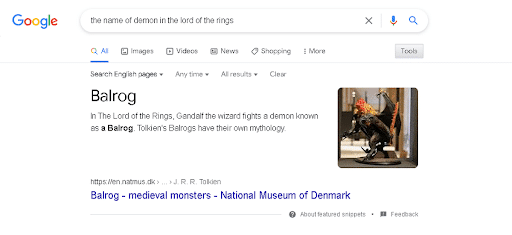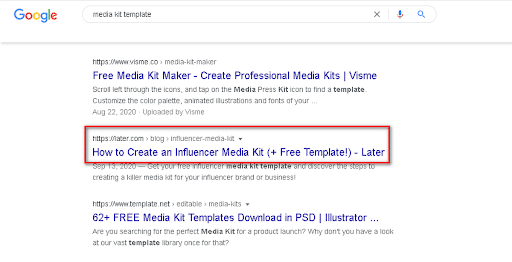A Detailed Guide on Structured Data for SEO

Do you know that search engine crawlers need your help?
You might wonder what kind of help it is. Search engine crawlers can’t understand the information about every single page on the website on their own.
And you can help them with this using structured data. However, is there any other value that structured data can provide you with?
In this guide, you will get a detailed breakdown of structured data and what is in it for you.
Let’s start!
Does Structured Data Help Your SEO?
Don’t get confused by thinking that structured data is a ranking factor. Nope. There is no direct impact on ranking your website in Google. However, structured data can help you benefit in terms of SEO.
What are the benefits of structured data you can get?
Let’s review four of them down below:
1. It helps get to a knowledge graph
When you search for some information on Google, you can stumble upon a knowledge graph – the section you can see on the right side of the SERP.

The knowledge graph uses structured data to reflect the connection between the entities that represent your product, brand voice, brand logo, and everything in between.
It is quite useful to get your product or brand reflected in the knowledge graph in terms of SEO. It will help you get more brand visibility and authority.
2. It helps get rich results
Rich results provide users with information taken from relevant structured data. As a rule, the most commonly known type of rich results is rich snippets.
This extra information on the search query can guarantee to get more link clicks.
3. It supports semantic search
Semantic search plays a significant part in helping search engines suggest to users the most related results. It finds the meaning behind the search queries and generates suggestions per each search request.
For instance, when you run keyword research, you collect some keywords and optimize your content to rank for them. One of your target keywords is tied up to your brand-new product page.
Let’s say, this target keyword is “media kit template” and you want to optimize your media kit maker with the help of this search query.
Eventually, when you start ranking for this keyword. You see that Google suggests not just product pages but detailed guides on how to create media kits.
While the semantic search takes care of the user’s search request. It analyzes what people type in Google and suggests the most accurate results ever.

4. It supports E-A-T
For those who have never heard of what “E-A-T” means, here is the explanation.
E-A-T is a concept that unites three principles – expertise, authoritativeness, and trust. Google uses this concept and tries to figure out each of these three principles on every page on the website.
And structured data helps Google with finding an “E-A-T” concept by shaping the information on a given page.
Structured data provides Google with the post outline, author’s bio, visual content, and other attributes. It works as a source of information for Google that aligns with an E-A-T concept.
These four benefits of structured data for SEO are just a few examples that illustrate the value. There are more benefits as well.
The Importance of Schema Markup for Structured Data
Structured data requires using a specific format that would help it be recognizable on the web. And schema markup provides such help. Schema markup creates the format that explains to Google what exact piece of information it tries to understand.
Here is what the Founder of SERP had to say about using schema markup:
“Make it as easy as possible for Google to understand what your page is about. Traditionally, SEOs do this by putting their primary keywords in the URL, Page Title, H1, and variations in H2s, and throughout content.
However, you can go one step further – and structure your data using pre-defined guidelines/criteria for ‘marking up’ what everything is with code (JSON). humans can’t see it, machines have a much easier time creating semantic relationships and truly understand context in your post”.
To get you a better idea of how it works, review an example.
Let’s say, your goal is to let Google know that your first name is “John”. Google can’t understand that this is your first name but not the size or color. You must help Google with scanning this information. To do this, use schema.org vocabulary and search “first name” term.
Among the suggested results you should pay attention to the “givenName” property. Use this property in the code and don’t apply any other variations except to this one. They won’t simply work anyway.
So, how to structure your data?
Keep on reading and you will find out.
The Process of Structuring Data
Basically, there are three formats for structuring data – Microdata, JSON-LD, and RDFa. Each of these formats has its specifications. You need to know about them.
- JSON-LD
The number one format that Google recommends to use. What’s more important, this is the easiest format to implement.
Why?
Because there is no need to “tagging” HTML elements as you will have to do dealing with other types of format. It works as one block of code that provides Google with all necessary information about a particular page.
<script type=”application/ld+json”>
{
“@context”: “https://schema.org/”,
“@type”: “Organization”,
“name”: “Visme”,
“url”: “https://visme.co/”,
“description”: “Visme is a leading all-in-one Visual Communication tool empowering the world to create beautiful and engaging Presentations, Infographics, Reports, Social Graphics and everything in between.,
“email”: “[email protected]”
}
</script>
Just place the script in theorsection of your HTML.
-
- Microdata
Microdata is the format that looks opposite to JSON-LD. It goes not as one big block of code but is sprinkled on the page to markup content straight off the reel.
<p itemscope itemprop=”organization” itemtype=”https://schema.org/Organization”>
<a href=”https://visme.co/” itemprop=”url”>
<span itemprop=”name”>Visme</span></a>
<span itemprop=”description”>Visme is a leading all-in-one Visual Communication tool empowering the world to create beautiful and engaging Presentations, Infographics, Reports, Social Graphics and everything in between.</span>
Contact us at: <span itemprop=”email”>[email protected]</span>
</p>
By the way, some SEO plugins actively use this format to generate your schema markup and perform this work instead of you.
-
- RDFa
This format is used rarely in practice and it works just like Microdata.
<p vocab=”https://schema.org/” typeof=”Organization”>
<a href=”https://visme.co/” property=”url”>
<span property=”name”>Visme</span></a>
<span property=”description”>Visme is a leading all-in-one Visual Communication tool empowering the world to create beautiful and engaging Presentations, Infographics, Reports, Social Graphics and everything in between.</span>
Contact us at: <span property=”email”>[email protected]</span>
</p>
Now, let’s see how you should test your structured data.
Test your structured data correctly
No developer would implement code without testing it firstly. It is strictly important to make sure the code doesn’t have any issues. Thus, use the structured data testing tool from Google. Take a snippet of your code and test it with this tool.

If there are no errors detected, you can start the process of creating content.
How to Deal With Structured Data Beyond Your Website
Did you know that it is possible to get featured in the Knowledge Graph without deploying schema markup?
Yes, it is possible because the mentions of your product or brand can be seen anywhere on the web. Plus, don’t delude yourself by thinking that you need to have a page on Wikipedia to reach out to the knowledge graph.

Why?
Because it is challenging to get featured on Wikipedia. Moreover, Google analyzes various sources to suggest the most accurate information per search request. Furthermore, Google states the source of description, while knowledge panels don’t have it.
To get the system up and running, you’ll need to combine the information about your brand, product, and business in general.
Last but not least – spread a word about your company on social channels, authoritative web-resources. And build connections using a “sameAs” property.
To Sum Up
Keep in mind that structured data is a part of SEO strategy but it isn’t a top priority for your website. You can work with this if you want to make your SEO brilliant.
You have just got familiar with everything you need to know about structured data. If you think this guide lacks more information, feel free to share it in the comments.




